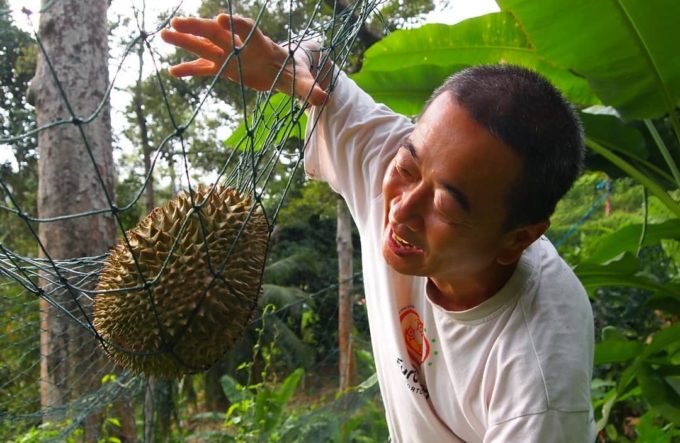
What’s that smell?

Don’t worry—you won’t have to eat it. But let me tell you a story.
This post originally appeared on April 20, 2018, in Anup Kaphle’s weekly newsletter. Read the archives and subscribe to the newsletter.
Happy Friday, dear readers. Do you smell that?
What is that, you ask?
It’s durian.
Don’t worry—you won’t have to eat it. But let me tell you a story.
When I was growing up, there was one particular person whose visit I would look most forward to: my grandmother. My grandmother, now 80, lived with my grandfather in a village that was about 10 hours away—the first six hours by bus, and then the next four on foot, up and down half a dozen rugged hills and across two rivers. Once a year, she made that journey to visit us in the city. She brought along two giant jute sacks, one of them filled with freshly harvested rice and the other with a mix of things: a bundle of lychees, a box of deep-fried rice flour rolls, a bag of turmeric roots, blocks of jaggery, and two giant melon-looking fruits with a dinosaur-like green shell. We called them katahar.
Katahar is a fruit I often heard being referred to as “a poor man’s chicken.” Cooked raw with onions, cumin, and coriander, the fruit is often served as a curry dish with rice. Once a year in my home, we also had katahar curry. It was a welcome change from the humdrum vegetable dinners we often had during the week—cabbage or snake gourd stewed with potatoes. After the Maoist insurgency intensified in Nepal in the early 2000s, my grandmother’s visits became rare. Soon, I moved to Kathmandu for studies. The sacks of lychees and jaggery stopped coming. Those evening dinners of katahar curry also soon became a distant memory.
Many years later in the United States, I was browsing in New York’s Chinatown to buy soured bamboo shoots. There, in front of a Chinese shop, sat a giant styrofoam box filled with what looked like the same dinosaur-like melons my grandmother used to bring from the village. I bought one, carried it home and cut it open. Katahar emitted a putrid, bubblegum-like smell, but this was something else—a whiff of incongruous things, somewhere between sweet caramel and a bulb of stale garlic. Ignoring the smell, I chopped some fresh onions, sauteed some green chiles, and then threw in the chopped fruit. Recalling my mother’s recipe, I added some turmeric powder, then some ground cumin and coriander. That evening, I had hoped to relive my memory from childhood. Instead, after the first few scoops of that curry with rice, I was frantically browsing on Google, trying to figure out the English word for katahar. It was only then that I realized the fruit I had grown up eating was jackfruit. The one I’d labored over in the kitchen for the last hour was something I’d never seen or heard before: Durian.
I never went out searching for jackfruit again. I’ve also never had durian since and rarely thought about it … until last week when the R&K Instagram feed was taken over by @DurianWriter. In a series of engaging posts, Lindsay Gasik tells the stories of the durian people in Malaysia whose entire lives depend on farming and selling durian. Some families in Penang have been selling the controversial fruit for generations. You may hate how it smells, but I hope you follow us on Instagram for this fascinating series. Next week on R&K Instagram, London-based photographer Quetzal Maucci will be sharing photographs from her “Children of Immigrants” series.
If you’re too cool for durian, I invite you to try some Russian caviar, fresh from the farm in North Carolina which is now the single largest producer of the precious osetra caviar in the United States. Also this week on R&K, Emily Ding takes us on a tour of the Hollywood-themed sets on Europe’s only desert nearly half a century after the filming of a classic spaghetti Western trilogy.
Oh, and happy 4/20! Do you smell that?
That’s a joint—and here’s everything you need to know on how to roll one.
You’re welcome. See you all here next Friday.
Please follow us on Twitter and Facebook, and encourage your friends and family to subscribe to this newsletter.